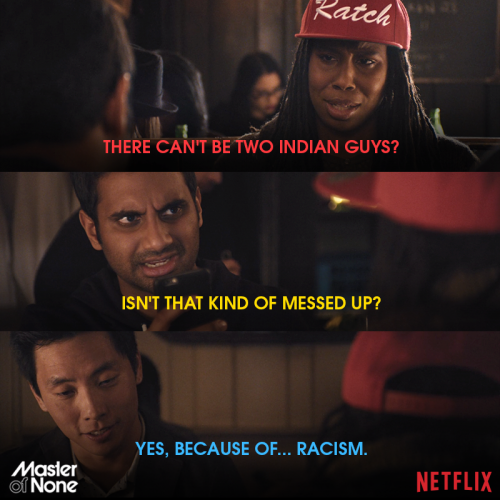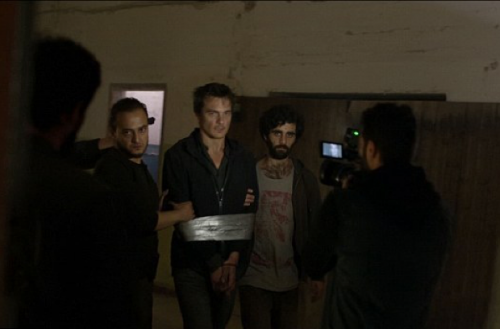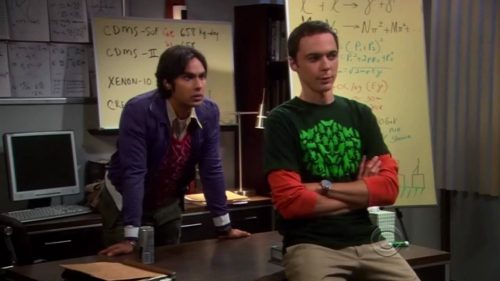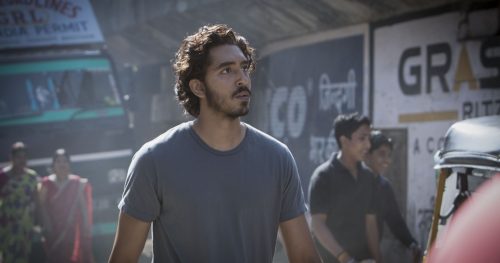
by Fatima Ahmed
Actor Dev Patel is heading to the Oscars tomorrow with a nomination in the Best Supporting Actor category for his movie “Lion.” South Asians across the world are waiting with bated breath for the first South Asian actor to win an Oscar in over three decades. Clearly, it’s a big step for South Asian actors and performers in the industry. Does this mean that desis are finally being properly recognized by Hollywood?
Fortunately, brown faces are popping up everywhere these days beyond just Dev Patel – from sitcoms, to dramas, to films, and more. It seems as if South Asian talent is finally being recognized. In the last few years, we saw actor-writers like Mindy Kaling and Aziz Ansari snatch their own shows, Bollywood actors like Priyanka Chopra and Deepika Padukone invade Hollywood, and comedians like Asif Mandvi and Hasan Minhaj continue to kill the game. These actors are at the top of their careers, helming ground-breaking projects and delivering a diverse range of roles. They prove time and time again how incredibly talented they are.
Despite this, however, it seems Hollywood hasn’t completely become accustomed to South Asian talent. Recently, actors Kunal Nayyar (“Big Bang Theory”), Kumail Nanjiani (“Silicon Valley”), and Kal Penn (Harold and Kumar series) tweeted about being mistaken for one another.
https://twitter.com/kumailn/status/823285876700508160
https://twitter.com/kunalnayyar/status/823304809130250240
"I'm glad they cast you in Harold & Kumar & Big Bang Theory, you're way hotter than that guy from Van Wilder". https://t.co/oogptTkKU2
— Kal Penn (@kalpenn) January 23, 2017
All three actors were commenting on funny mishaps that happened in their lives, something that’s common among celebs. However, if we delve deeper, it gets a little more complicated than a simple mistake. These simple oversights actually have racist roots. In fact, this is the classic “They all look the same” racism which every racial minority group goes through at some point.
This is the same mentality that lead a reporter into mistaking Samuel L. Jackson for Laurence Fishburne on air. In fact, a similar incident happened when Vox confused Aasif Mandvi – who plays Uncle Monty in the new Netflix series “A Series of Unfortunate Events” – for Aziz Ansari. The mistake was pointed out on twitter and, unlike the Samuel L. Jackson controversy which became a huge conversation point in 2014, went more or less unnoticed. Besides the small disclaimer at the end of the aforementioned article, you wouldn’t have known it even happened.
Hi @voxdotcom, @azizansari did not play Monty— @aasif played Uncle Monty. It's not @kumailn either. https://t.co/POp7feqDtE
— Gabie T ? (@gabietanj) January 15, 2017
Disclaimer: Neither black, nor brown, nor Asians, all look alike. So, what’s happening? Many people have tried to explain this away using psychology, invoking the cross-race effect. However, that doesn’t seem to satisfy why this transgression is usually made toward people of color by white audiences. Something more insidious seems to be at work here.
The Token South Asian Friend
Diversity in Hollywood has come a long way. Instead of casting one black person in a sea of white people, it is now two black people. That’s at least some kind of progress. Nevertheless, this same phenomenon is now occurring with South Asians. If a show features a brown character, it is always as the token brown guy/girl in a group of white friends. With shows like “New Girl,” “Silicon Valley,” and “The Big Bang Theory” participating, this phenomenon quickly became common practice. Even a show like “The Mindy Project,” with Mindy Kaling at the helm, features her as the only brown character in the main cast.
Unsurprisingly, this lack of representations definitely harms the way audiences view brown people. It conditions the audience to never see more than one brown face at a time on screen, making it less likely to notice the full range of diversity, experiences, and cultures that define South Asians. When you only see one brown face at a time, how will you get used to the idea that more than one brown person can exist in the same space?

“In that episode [Indians on TV], there’s a lot of things that I’m glad I put out there that I feel like a lot of other minority actors have told me that this so rings a bell. When you go into an audition room and you see a bunch of people that look like you and you just start feeling like ‘Oh, I’m not here for me.’”
In this instance, and in many like it, South Asian actors are too often there as interchangeable brown bodies that can be replaced and swapped with any other one. Their character and performance are reduced to their skin color rather than their ability to deliver a performance. They don’t get the opportunity to audition for parts that are racially undefined, because racially undefined so often means white.
No, their acting chops are saved only for the parts that are defined by their race. This is the reason you don’t see more than one South Asian on a screen, because no one writes more than one of the same character. And almost every token South Asian role on television seems to be the same character – give or take the typical accent.
The Techie or the Terrorist
On the rare time when we do see South Asian characters on-screen, they find themselves typecast. This is not uncommon for Hollywood; after all it does function as a multi-billion-dollar industry and nuance rarely sells as well as an easy answer in a neatly packaged box. However, when it comes to racialized typecasting, it can have real-life impact on the lives of nonfictional people. From harmful stereotypes to outright racism, typecasting can define an entire race in the (pop) cultural zeitgeist. Akin to the typecast of the smart Asian or the “hood” black person, South Asians have faced two distinct boxes in recent times: the techie or the terrorist.
Ironically, the only time anyone sees more than one brown face on-screen is on shows that deal with terrorism because they must feature a group of radicalized brown, Muslim men. Most South Asian male actors’ IMDB filmography features a very Muslim sounding name – or even just “Terrorist Number Whatever” – because post-911, those seemed to be the only roles available to brown actors.

Aasif Mandvi recently said on “The Daily Show”:
“Especially, I think, coming up in the business. There were roles where I would read them and I was literally like ‘If I play this part everybody in my family is going to hate me.’ In fact, I think I once said to a producer or writer when I went to an audition, I said I’m glad you’ve written a Muslim person here but it’s a shame to me that you’ve never actually met a Muslim person because nobody ever talks like this.”
The techie on the other hand is almost never Muslim, almost always Indian (probably Hindu), and always brown. This trope falls into the same vein as the “All Asians are smart” variety of “positive stereotypes” which are actually not positive at all. Often made to act like encyclopedias and plot devices to help the (white) protagonist complete their mission, techies are the docile and helpful sidekicks. And, once again, they are all eerily similar.

With the lack of diverse roles and the pressure to play the same two or three characters over and over again, one can understand why audiences get confused between different South Asian actors. When two brown actors play very similar roles on television, it is easy to see where the confusion comes from. Even so, it is still inexcusable. People take more pains to remember the difference between Jimmy Fallon and Jimmy Kimmel than they do to remember two actors who look nothing alike, but happen to have the same skin color.
https://twitter.com/kumailn/status/820671951177822208
Dev Patel in Lion
The true story of a boy who was raised in India, who finds himself lost, and is subsequently adopted by a white Australian couple, “Lion” tracks Saroo as he tries desperately to search for his birth mother in India using Google Earth. While the film still has a strange fascination with the poverty of India à la “Slumdog Millionaire,” it explores the life of a modern everyday South Asian man living an average life.
It is one of the most real representations of a South Asian character that mainstream Hollywood has put out, mostly because it was based on a true story. Dev Patel plays an average Australian guy in the second half of the movie, one who has ambitions, a girlfriend, and a loving family. Yes, this is how low the bar is. That is all you have to do to portray a solid brown character.

“I don’t get roles like that, ever. To be able to be shot like that, to be able to say such words of gravitas and not be pandering to someone else or playing a sort of tech geek or this or that – to be able to adopt that space, it was a transformative journey… Just to be an every-man, a 20-something-year-old guy meant a lot.”
Winning an Oscar, for someone like Dev Patel, for a movie like “Lion,” would represent a victory for South Asians in Hollywood. Saroo Brierley isn’t just characterized by his race, he is also defined by his love and emotions and his bond with his family. He is breathed to life by the tangible relationships he has with the people in his life. He isn’t a techie, although he does a lot of Google Earth-ing. And he definitely isn’t a terrorist fueled by hatred, instead he is a son motivated by love.
[Read More: How the Golden Globes was a Lesson in Highlighting Diversity]
If Dev Patel wins, he wins for playing an average South Asian person. And that is a huge feat in the easy-answer-in-a-convenient-box world of Hollywood.
 Fatima Ahmed is a 1.5 generation Pakistani working on her degree in English Literature in Vancouver, Canada. She has an interest in human rights activism, social justice affairs, literature and art as well as excessive chai drinking. You can find her on twitter @FattyA123 or read more of her articles at schemamag.com.
Fatima Ahmed is a 1.5 generation Pakistani working on her degree in English Literature in Vancouver, Canada. She has an interest in human rights activism, social justice affairs, literature and art as well as excessive chai drinking. You can find her on twitter @FattyA123 or read more of her articles at schemamag.com.




